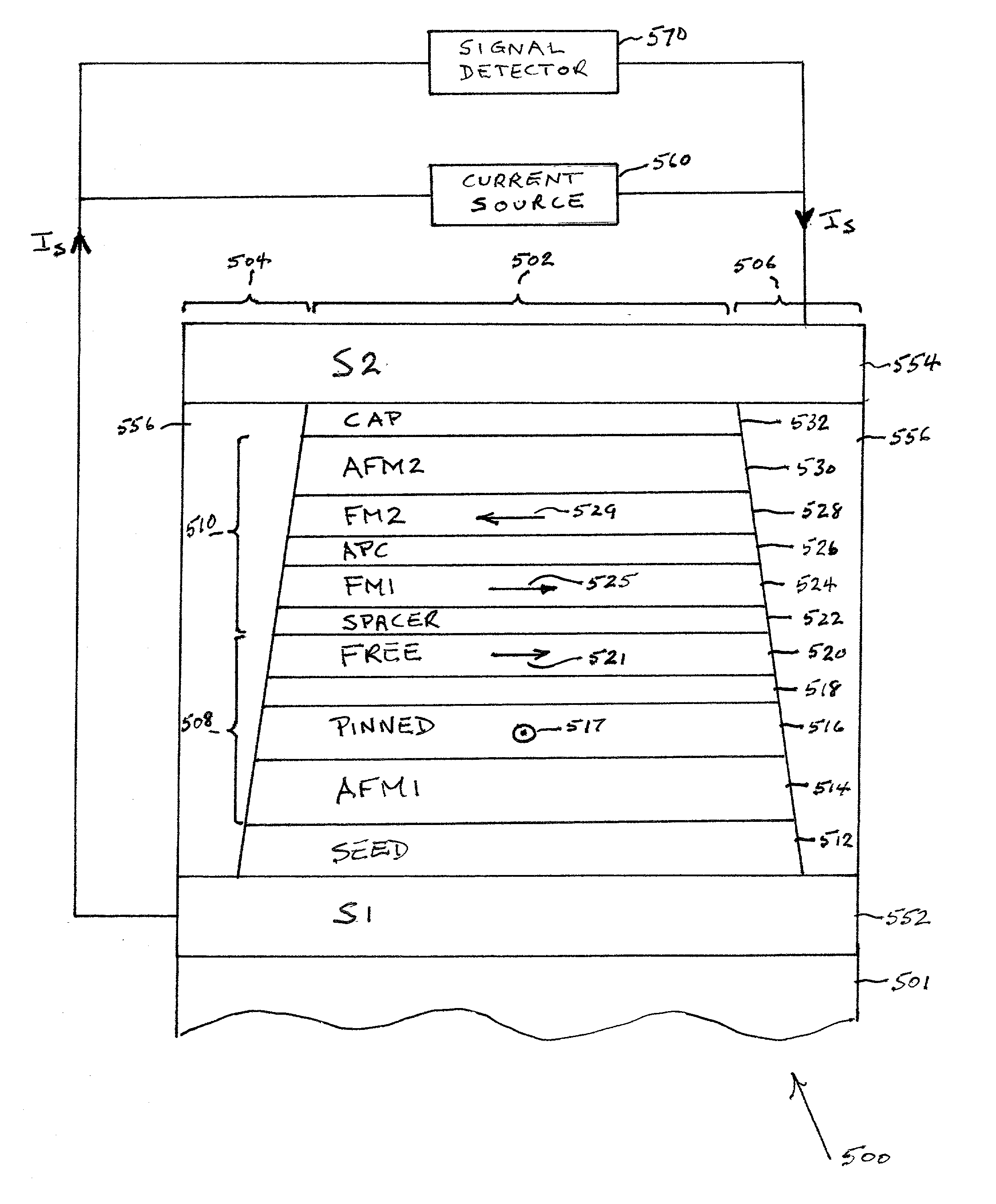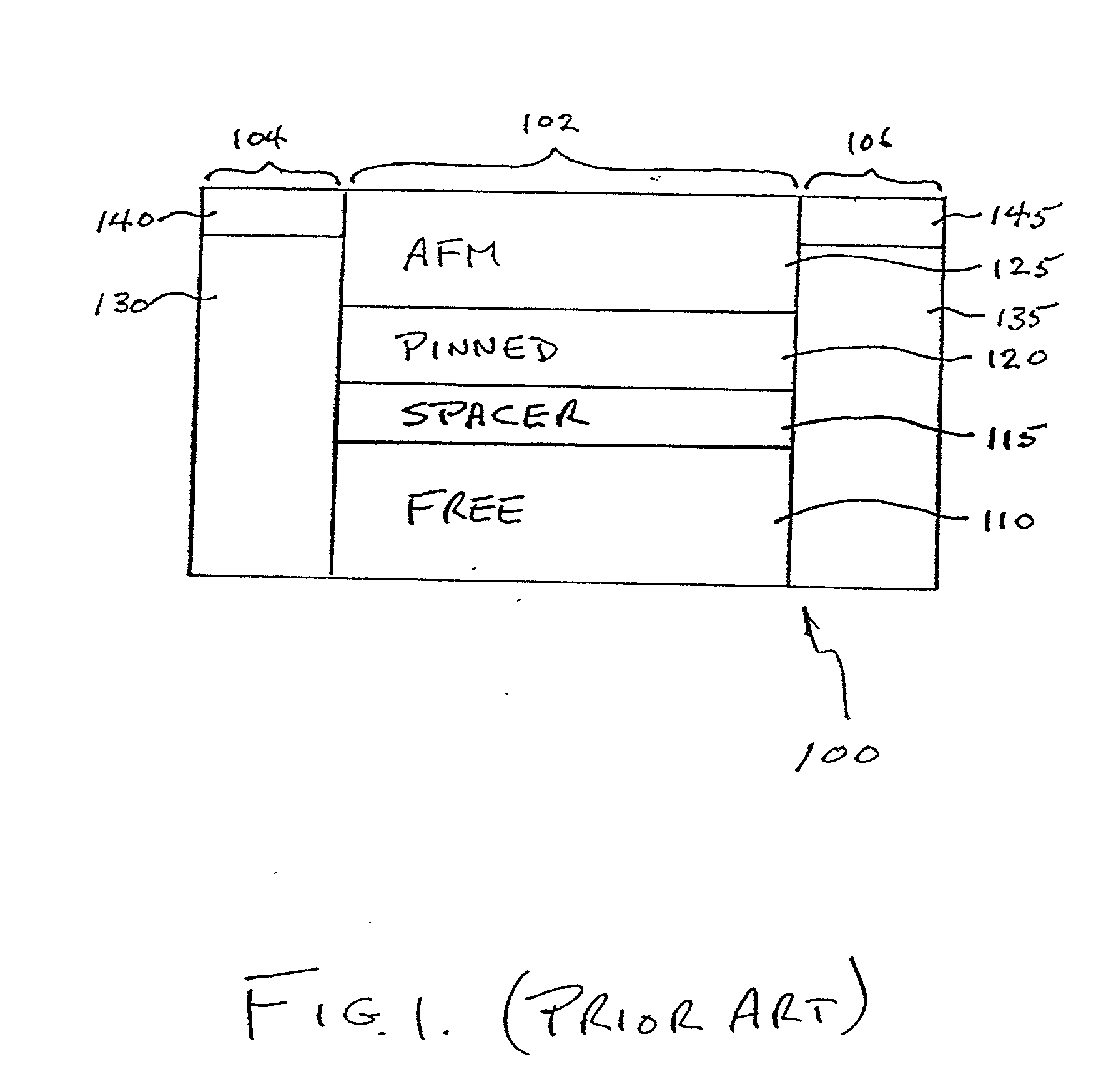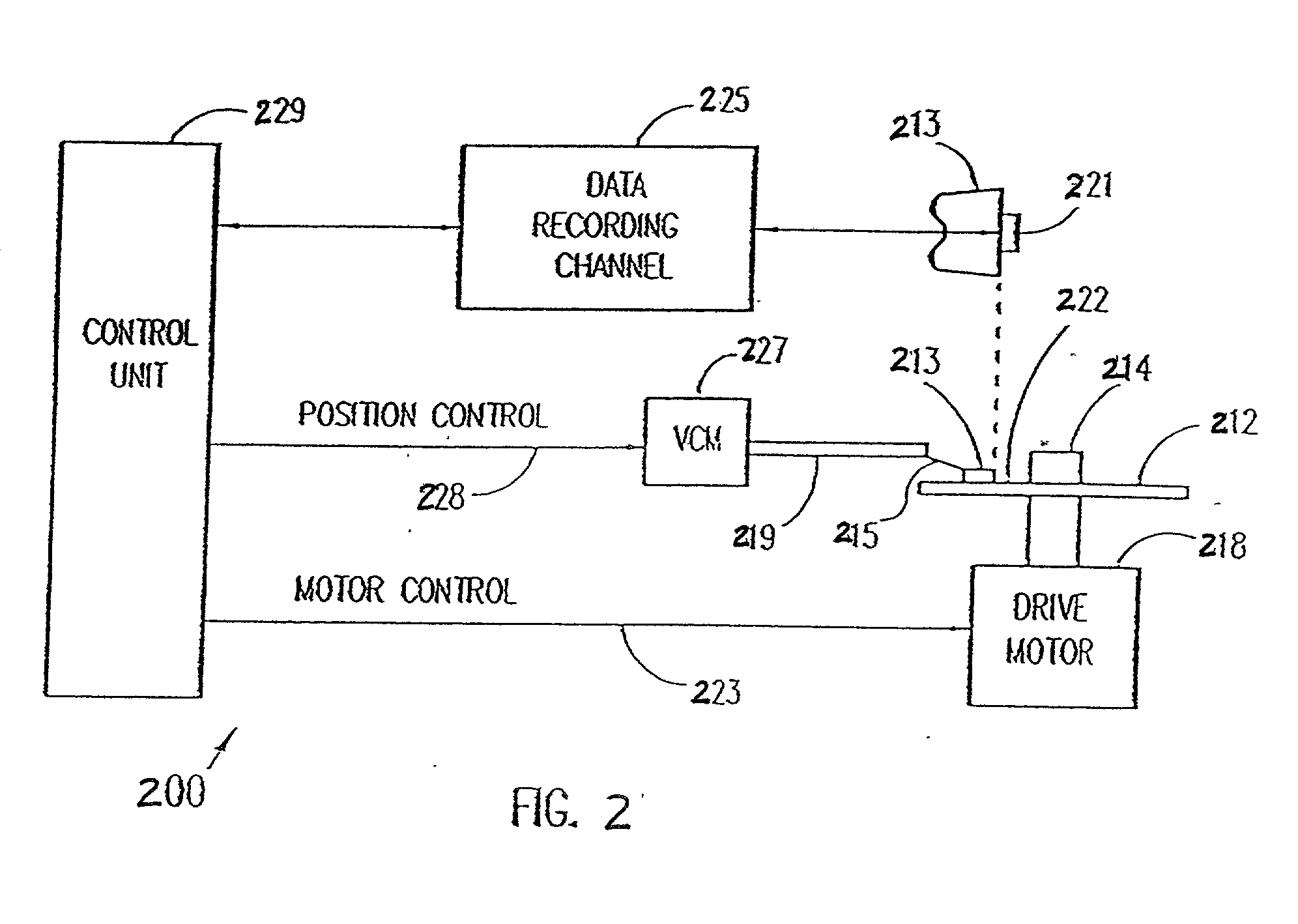Stabilization structures for CPP sensor
a technology of stabilization structure and cpp sensor, which is applied in the field of magnetic transducers, can solve the problems of difficult magnetic stabilization and achieve the effect of improving the stability of the free (sense) layer
- Summary
- Abstract
- Description
- Claims
- Application Information
AI Technical Summary
Problems solved by technology
Method used
Image
Examples
first embodiment
[0037] FIG. 5 shows an air bearing surface (ABS) view, not to scale, of a CPP spin valve (SV) sensor 500 according to the present invention. The SV sensor 500 comprises end regions 504 and 506 separated from each other by a central region 502. The active region of the SV sensor comprises a CPP spin valve (SV) stack 508 and a longitudinal bias stack 510 formed in the central region 502. The seed layer 512 is a layer deposited to modify the crystallographic texture or grain size of the subsequent layers, and may not be needed depending on the subsequent layer. The SV stack 508 sequentially deposited over the seed layer 512 comprises a first antiferromagnetic (AFM1) layer 514, a ferromagnetic pinned layer 516, a conductive spacer layer 518 and a ferromagnetic free (sense) layer 520. The AFM1 layer 514 has a thickness, typically 50-500 .ANG., at which the desired exchange properties are achieved with the pinned layer 516.
[0038] The longitudinal bias stack 510 sequentially deposited over...
second example
[0049] FIG. 6 shows an air bearing surface (ABS) view, not to scale, of a CPP magnetic tunnel junction (MTJ) sensor 600 according to a second embodiment of the present invention. The MTJ sensor 600 differs from the SV sensor 500 in having an MTJ stack 608 in place of the SV stack 508. The active region of the MTJ sensor comprises the MTJ stack 608 and the longitudinal bias stack 510 formed in the central region 502. The MTJ stack 608 sequentially deposited over the seed layer 512 comprises a first antiferromagnetic (AFM1) layer 514, a ferromagnetic pinned layer 516, an insulating tunnel barrier layer 618 and a ferromagnetic free (sense) layer 520. The insulating tunnel barrier layer 618, preferably formed of Al.sub.2O.sub.3, replaces the conductive spacer layer 518 of the CPP SV sensor 500 of the first example.
[0050] The longitudinal bias stack 510 sequentially deposited over the MTJ stack 608 has the same structure as the bias stack of the first example including a spacer layer 522...
PUM
 Login to View More
Login to View More Abstract
Description
Claims
Application Information
 Login to View More
Login to View More - R&D
- Intellectual Property
- Life Sciences
- Materials
- Tech Scout
- Unparalleled Data Quality
- Higher Quality Content
- 60% Fewer Hallucinations
Browse by: Latest US Patents, China's latest patents, Technical Efficacy Thesaurus, Application Domain, Technology Topic, Popular Technical Reports.
© 2025 PatSnap. All rights reserved.Legal|Privacy policy|Modern Slavery Act Transparency Statement|Sitemap|About US| Contact US: help@patsnap.com



